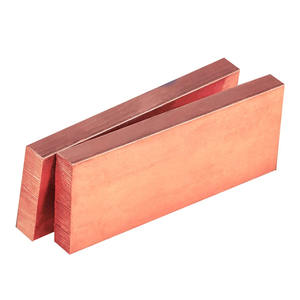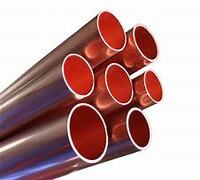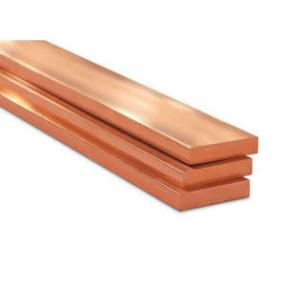1. Introduction
Just 24 hours ago, a major utility company in Texas announced a citywide upgrade of its grounding infrastructure—replacing outdated steel earthing systems with modern copper bonded ground rods to improve lightning protection amid rising storm activity. This move highlights the growing reliance on high-conductivity materials like copper rod in critical electrical safety systems. If you’ve ever wondered how to properly install, weld, or repurpose copper rod—or even strip copper wire for scrap—you’re not alone. In this practical guide, we’ll walk you through seven proven techniques that professionals use every day.

2. Installing a Copper Earth Rod for Safe Grounding
Copper earth rods (also called earthing rod copper or ground rod copper) are essential for diverting fault currents safely into the earth. Here’s how to install one correctly:
- Choose a copper bonded earthing rod or copper clad steel earth rod—both offer excellent corrosion resistance and conductivity at a lower cost than solid copper.
- Drive the rod vertically into moist soil using a hammer or mechanical driver until only 6–8 inches remain above ground.
- Connect your grounding conductor (like a copper strip for earthing) using an exothermic weld or listed mechanical clamp.
- Test earth resistance with a ground resistance tester; values under 25 ohms are typically acceptable.
Pro tip: Check local codes—some regions require multiple rods spaced at least twice the rod length apart.
3. Welding and Brazing with Copper Rod
When joining copper components, you might need a copper welding rod or copper brazing rod. For copper-to-copper joints, copper to copper brazing rods or copper to copper welding rod options work best.
3.1. Brazing Copper Pipes or Rods

Clean surfaces thoroughly with emery cloth. Apply flux, then heat evenly with a propane or oxy-acetylene torch. Feed copper brazing rod into the joint until it flows by capillary action. Let cool naturally—don’t quench.
3.2. Welding Solid Copper
For thicker sections, use a TIG welder with a copper welding rod. Preheat the base metal to reduce cracking. Use DCEN polarity and argon shielding gas. Note: pure copper conducts heat rapidly, so higher amperage is often needed.
Always wear proper PPE—copper fumes can be hazardous if inhaled.
4. Choosing the Right Copper Rod Type
Not all copper rods are the same. A copper round bar (or round bar copper) is ideal for machining or custom fittings. For grounding, go with copper bonded steel or copper clad ground rod—they combine steel strength with copper’s conductivity. If you’re sourcing for scrap or resale, compare copper rod price vs. copper ingot price to maximize value. Flexible copper bar or flexible copper bus bar may be better for dynamic electrical connections in panels.
5. Stripping Copper Wire Efficiently

Whether you’re recycling or salvaging, knowing the best way to strip copper wire saves time and boosts profits.
5.1. Manual vs. Mechanical Stripping
For small jobs, use a wire stripper. For bulk work—like stripping wire for scrap—invest in a motorized stripper. Avoid burning copper wire for scrap; it releases toxic fumes and degrades copper quality.
5.2. Fast Methods That Preserve Value
The fast way to strip copper wire involves using a rotary wire stripper or automatic cable peeler. These cleanly remove insulation without nicking the conductor, keeping the copper strip price higher at recyclers.
Never strip copper wire outdoors near open flames—many insulations are flammable.
6. Using Copper Strip in Electrical and Construction Projects
Flat copper strips—like 1mm copper strip, beryllium copper strip, or nickel plated copper strip—are used in busbars, earthing, and even roofing (copper roof strip). You can buy copper strip near me from electrical wholesalers or online as a roll of copper strip.
Common sizes include copper earth strip 25x3mm, priced per meter. Thin copper strips are great for electronics, while copper metal strips handle high-current applications. Always verify specs: copper alloy strip may offer added strength but slightly lower conductivity.
7. Working with Copper Pipe Alongside Rod Systems
Though not a rod, copper pipework often complements copper rod installations—especially in HVAC and plumbing. Aircon copper pipe (or air conditioning copper pipe) must be sized correctly: 15mm copper pipe for residential lines, 22mm for larger runs. When soldering, clean with wire brush, apply flux, and use lead-free solder. Bending copper pipe avoids extra fittings and potential leaks.
Remember: copper pipe price fluctuates with market rates, so check ac copper pipe price before large purchases.
8. Conclusion
From installing a copper bonded ground rod to stripping copper wire for recycling, handling copper rod demands both knowledge and the right tools. Whether you’re improving home safety, fabricating electrical components, or prepping scrap, these seven practical methods ensure you get the job done right—safely, legally, and cost-effectively. Always prioritize quality materials like copper clad steel earth rod or certified copper brazing rods, and never cut corners on safety.
Our Website founded on October 17, 2012, is a high-tech enterprise committed to the research and development, production, processing, sales and technical services of ceramic relative materials such as 7. Our products includes but not limited to Boron Carbide Ceramic Products, Boron Nitride Ceramic Products, Silicon Carbide Ceramic Products, Silicon Nitride Ceramic Products, Zirconium Dioxide Ceramic Products, etc. If you are interested, please feel free to contact us.

